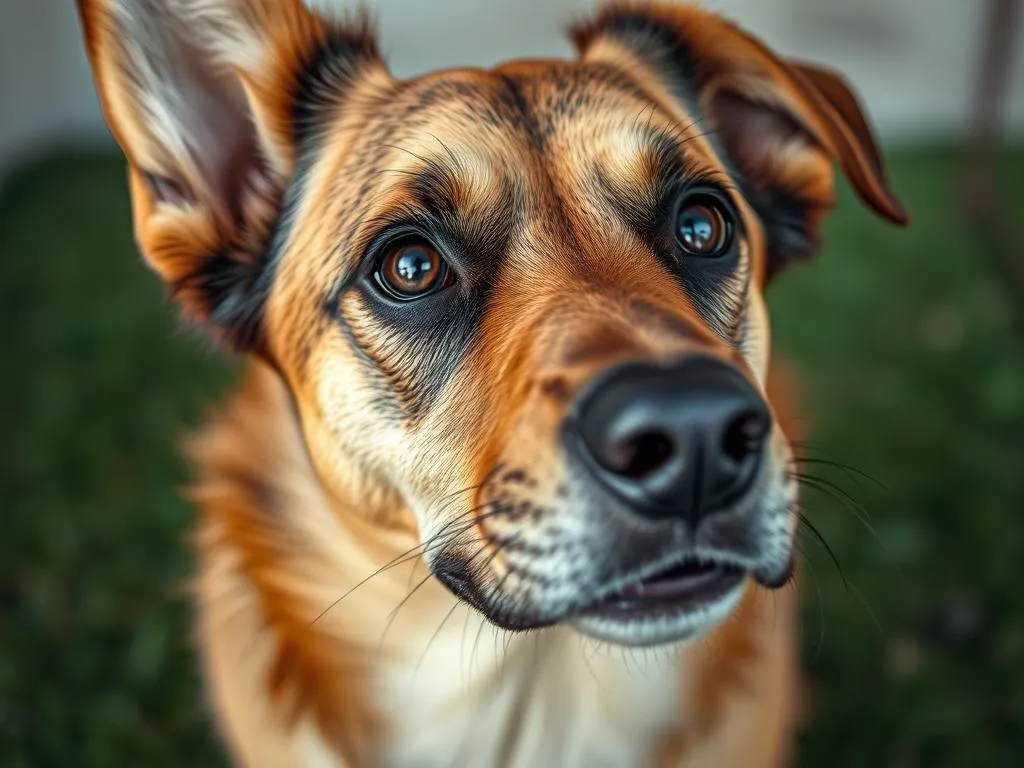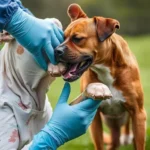
Introduction
As a devoted dog owner, ensuring the health and well-being of your furry friend is likely a top priority. One area that often raises concern is their eyes. Dogs are susceptible to various eye issues, which can often lead to serious complications if left untreated. Many pet owners frequently express worry with the phrase, “there’s something in my dog’s eye”. This concern can stem from a range of issues, from minor irritants to more severe conditions. In this article, we will delve into understanding dog eye anatomy, identifying foreign objects, immediate steps to take, when to seek veterinary care, preventative measures, and more.
Understanding Dog Eye Anatomy
Basic Structure of a Dog’s Eye
To comprehend potential eye issues, it’s vital to understand the basic structure of a dog’s eye. The key components include:
- Cornea: The transparent front part of the eye that covers the iris and pupil. It helps to focus light.
- Pupil: The opening in the center of the eye that adjusts to control the amount of light entering.
- Lens: Located behind the pupil, the lens further focuses light onto the retina.
- Retina: This light-sensitive layer at the back of the eye converts light into electrical signals sent to the brain.
Each part plays a crucial role in maintaining vision, and any disruption can lead to significant issues.
Common Eye Conditions in Dogs
Dogs can suffer from various eye conditions that may cause discomfort or vision problems. Some prevalent eye issues include:
- Conjunctivitis: Inflammation of the conjunctiva, leading to redness and discharge.
- Cataracts: Clouding of the lens, which can impair vision and may require surgical intervention.
- Glaucoma: Increased pressure within the eye, which can cause pain and potential blindness if untreated.
Symptoms of these conditions may include excessive tearing, squinting, and noticeable changes in behavior.
Identifying Foreign Objects in Your Dog’s Eye
Common Causes of Eye Irritation
There are several common irritants that can lead to your dog experiencing discomfort in their eyes. These include:
- Dust and Debris: Outdoor activities can introduce various particles that irritate the eye.
- Grass and Plants: Certain grasses and plant materials can scratch the cornea or become lodged in the eye.
- Foreign Bodies: Small objects such as seeds, twigs, or even small insects can enter the eye.
Dogs are particularly prone to eye irritations in environments where they are active outdoors, especially in tall grass or during windy conditions.
Signs Your Dog Might Have Something in Their Eye
Recognizing the signs that your dog may have something in their eye is crucial for prompt attention. Look for physical signs such as:
- Rubbing Eyes: If your dog persistently rubs their eyes with their paws.
- Squinting: A noticeable squint can indicate discomfort.
- Excessive Tearing: Watery eyes can be a sign of irritation.
Behavioral changes are also essential to note. For instance, if your dog appears agitated, is pawing at their face, or avoids bright light, these may be indications that they are experiencing discomfort.
Immediate Steps to Take
Initial Assessment
When you suspect that there’s something in your dog’s eye, the first step is to perform a safe examination.
- Approach Calmly: Ensure your dog is calm and comfortable to prevent any sudden movements.
- Use Good Lighting: Find a well-lit area to inspect the eye closely.
- Check for Redness or Swelling: Look for any visible signs of irritation, such as redness or swelling.
If you observe severe symptoms, such as bleeding or extreme distress, it’s essential to recognize that it may be an emergency.
Home Remedies and First Aid
If you suspect a minor irritation, there are some safe methods to flush out the eye:
- Saline Solution: Use a sterile saline solution (available at pharmacies) to gently rinse the eye. Avoid using tap water, as it may contain irritants.
- Eyewash: A dog-specific eyewash can be beneficial in flushing out irritants.
However, be cautious. If you notice signs of severe pain, increased redness, or discharge, avoid home treatments and seek veterinary care immediately.
When to Seek Veterinary Care
Signs That Require Professional Attention
Certain symptoms indicate that it’s time to consult a veterinarian. Look for:
- Severe Redness: Intense redness of the eye or surrounding tissue.
- Swelling: Noticeable swelling around the eye or eyelids.
- Discharge: Any unusual discharge, especially if it’s green or yellow.
Timely intervention is crucial, as untreated conditions can lead to permanent damage or loss of vision.
What to Expect at the Vet
When you take your dog to the vet, expect a thorough examination. Common diagnostic procedures may include:
- Eye Exams: The vet will use specialized tools to examine the eye’s internal structure carefully.
- Fluorescein Staining: A dye may be applied to detect scratches on the cornea or foreign bodies.
Treatment options will depend on the diagnosis and may include medications, eye drops, or, in some cases, surgery.
Preventative Measures
Regular Eye Care Practices
Proactive eye care is essential for maintaining your dog’s eye health. Consider implementing regular practices:
- Routine Eye Checks: Regularly check your dog’s eyes for any signs of irritation or unusual changes.
- Cleaning Routines: Use a damp cloth to gently wipe away any discharge or debris around the eyes, preventing irritants from accumulating.
Environmental Considerations
Creating a safe play environment for your dog can significantly reduce the risk of eye injuries. Consider the following:
- Safe Play Areas: Ensure that your dog has a designated play area free from sharp objects or potential irritants.
- Understanding Breed-Specific Eye Health Issues: Some breeds are more prone to eye problems than others. Researching your dog’s breed can help you be more vigilant about specific issues.
Conclusion
Being proactive about your dog’s eye health is crucial to their overall well-being. Recognizing signs that there’s something in your dog’s eye can make all the difference in preventing serious complications. Regular eye care, environmental awareness, and timely veterinary visits are essential for maintaining your dog’s eye health. By staying vigilant and informed, you can help ensure your furry friend enjoys a healthy, happy life.
FAQs
Can dogs get eye infections from foreign objects?
Yes, foreign objects can cause irritation and lead to infections if not addressed promptly. It’s essential to monitor your dog’s eyes and seek veterinary care if you notice signs of infection.
How often should I check my dog’s eyes?
Regular checks should be part of your routine, ideally once a week. However, increase the frequency if your dog is prone to eye issues or shows signs of discomfort.
What are the long-term effects of foreign objects in a dog’s eye?
If not treated, foreign objects can cause corneal ulcers, infections, or even permanent vision loss. Timely intervention is crucial to prevent these complications.
Are certain breeds more susceptible to eye problems?
Yes, certain breeds such as Bulldogs, Poodles, and Shih Tzus are known to have higher risks for various eye conditions. Understanding your dog’s breed can help you monitor for potential issues more effectively.









